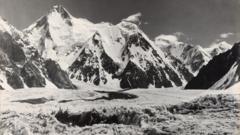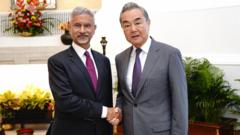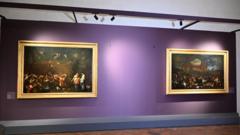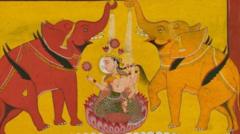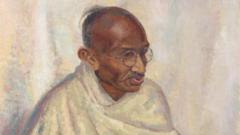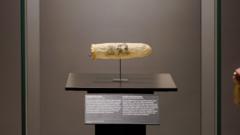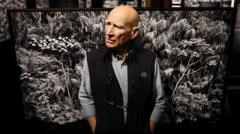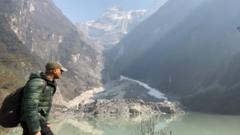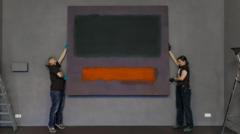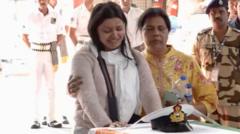The legacy of Vittorio Sella, a remarkable Italian photographer, is being celebrated in a new exhibit spotlighting his rare and historically significant images of the majestic Himalayas. Dubbed "Vittorio Sella: Photographer in the Himalaya," this exhibition, organized by the Delhi Art Gallery (DAG) and curated by noted British explorer Hugh Thomson, is showcasing an extraordinary collection of Sella's early high-altitude photography, offering viewers a glimpse into the breathtaking landscapes he encountered over a century ago.
Sella, born in 1859 in Biella, Italy, was more than just a photographer; he was an innovator whose technical mastery in photography was pivotal during the turn of the 20th century. His skills in engineering and chemistry, honed through his family's wool trade, allowed him to create striking images under challenging conditions. Each photograph serves as a time capsule, revealing the pristine beauty of towering peaks like Kanchenjunga and K2.
The Himalayan journey for Sella commenced with his participation in an expedition with British explorer Douglas Freshfield in 1899. Despite the relentless rain thwarting their climbing ambitions, Sella utilized the opportunity to capture the untouched snow-dusted summits, experimenting with new techniques that would become his hallmark.
His artistic endeavors reached new heights a decade later during a grueling 1909 expedition to K2 with the Duke of the Abruzzi. Sella's commitment to capturing this challenging mountain involved navigating treacherous terrains while carrying heavy camera equipment that weighed nearly 30 kg. His extraordinary ability to blend technical skill with artistic vision earned him a reputation as one of the greatest mountain photographers of his time.
With about 250 formal photographs taken during the K2 expedition and around 200 from his earlier venture to Kanchenjunga, Sella exercised immense care with each captured moment. In an era before digital photography, where accessibility to film was limited, Sella's meticulous approach to photography resulted in stunning images that still evoke awe today.
Ansel Adams later hailed Sella's work for its purity and emotive capacity, reflecting how finely he interpreted the landscape’s natural beauty. While many of Sella's photographs faced challenges, such as adverse conditions ruining negatives, those that survived speak to his visionary artistry and indomitable spirit.
As the exhibition in Delhi unfolds, it not only provides a platform to appreciate Sella’s remarkable contributions to photography but also encourages a deeper understanding of the cultural and natural heritage of the Himalayas—a testimony to the enduring legacy of indigenous landscapes through the lens of a pioneer.
Sella, born in 1859 in Biella, Italy, was more than just a photographer; he was an innovator whose technical mastery in photography was pivotal during the turn of the 20th century. His skills in engineering and chemistry, honed through his family's wool trade, allowed him to create striking images under challenging conditions. Each photograph serves as a time capsule, revealing the pristine beauty of towering peaks like Kanchenjunga and K2.
The Himalayan journey for Sella commenced with his participation in an expedition with British explorer Douglas Freshfield in 1899. Despite the relentless rain thwarting their climbing ambitions, Sella utilized the opportunity to capture the untouched snow-dusted summits, experimenting with new techniques that would become his hallmark.
His artistic endeavors reached new heights a decade later during a grueling 1909 expedition to K2 with the Duke of the Abruzzi. Sella's commitment to capturing this challenging mountain involved navigating treacherous terrains while carrying heavy camera equipment that weighed nearly 30 kg. His extraordinary ability to blend technical skill with artistic vision earned him a reputation as one of the greatest mountain photographers of his time.
With about 250 formal photographs taken during the K2 expedition and around 200 from his earlier venture to Kanchenjunga, Sella exercised immense care with each captured moment. In an era before digital photography, where accessibility to film was limited, Sella's meticulous approach to photography resulted in stunning images that still evoke awe today.
Ansel Adams later hailed Sella's work for its purity and emotive capacity, reflecting how finely he interpreted the landscape’s natural beauty. While many of Sella's photographs faced challenges, such as adverse conditions ruining negatives, those that survived speak to his visionary artistry and indomitable spirit.
As the exhibition in Delhi unfolds, it not only provides a platform to appreciate Sella’s remarkable contributions to photography but also encourages a deeper understanding of the cultural and natural heritage of the Himalayas—a testimony to the enduring legacy of indigenous landscapes through the lens of a pioneer.

